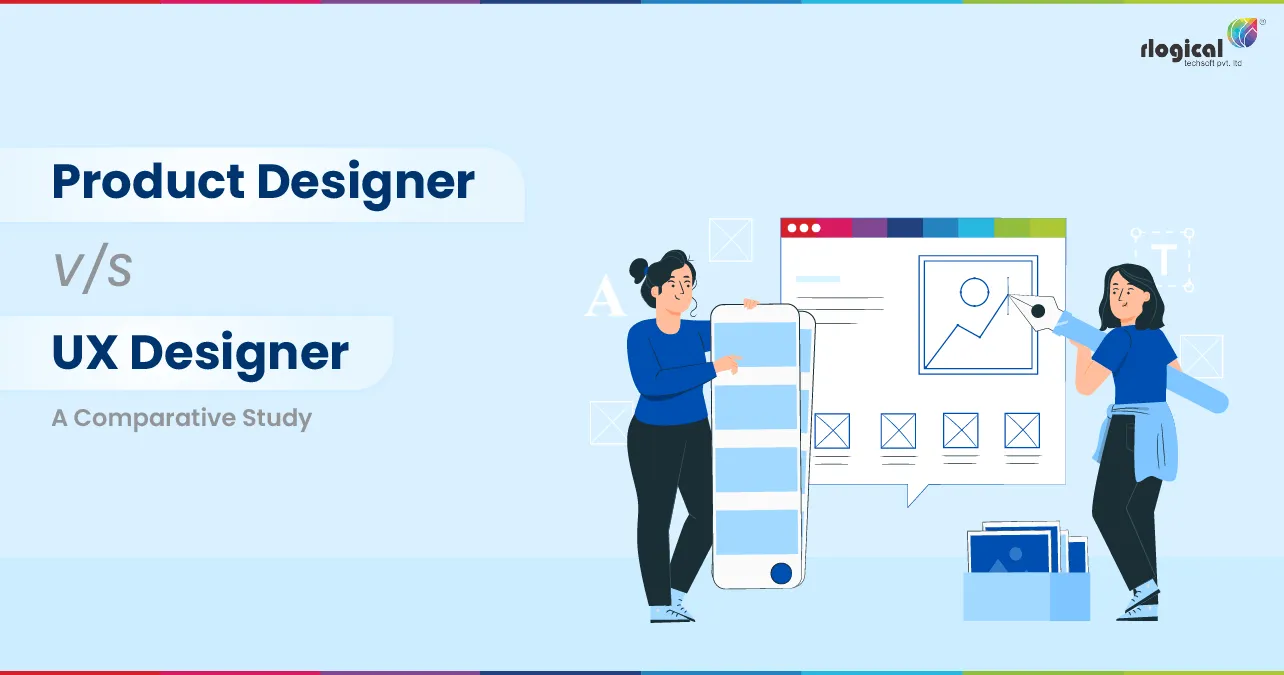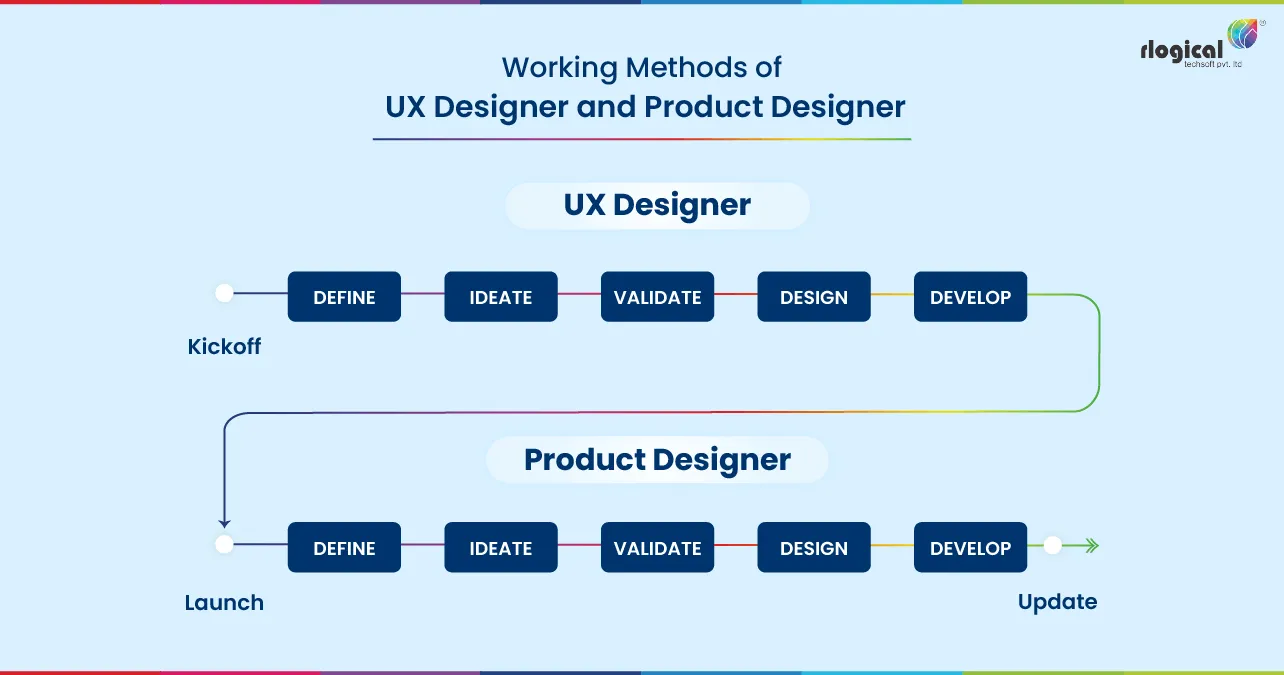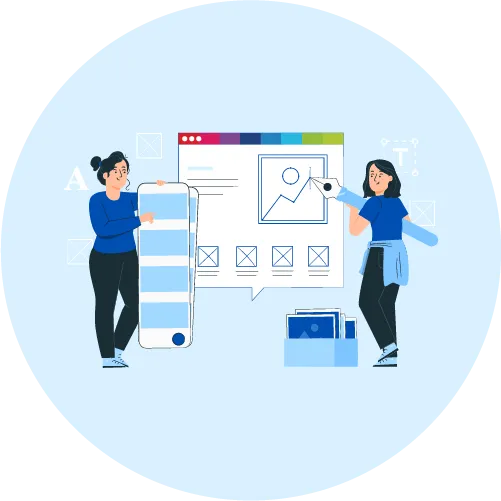
Even in the designing industry, there are many sub-areas of design. What was earlier only limited to the graphic design sphere has diversified to different specialties. The introduction of new designing tools and identification of design scope in different industries has created many opportunities for designers. Examples of major designing areas are product design and UX design. Often, the two sectors of design are mistaken for each other. This article will compare UI/UX Design and Product design to view both the capabilities.
At first glance, UI/UX Development Services and product design may look the same to amateurs, but there are many finer points of comparison for the two designing areas. The fundamental work of designers remains the same for both. Design is used to keep the integrity and aesthetics of the app or the product under development.
What is UI/UX Design?
The UI/UX Development Services are more focused on heightening the user experience for a company or app customers. These days, everything depends on the user experience of an app. Features and app types are already on offer in a highly competitive environment. If an app dominates the market for a long time, it does this only through steady upgrades and improvements in user experience. UI/UX Design and layout play a huge role in offering the experience to the users as design elements engage the sensory organs and mind of the user.
UX design is a complex process that combines branding, design elements, customer psychology, and functionality of the app under development. Such processes need close analysis and study of design needs by design professionals. UX designers have to pay special attention to the app’s functionality and performance while designing the app layout.
What Is Product Design?
While UX design only deals with designing the user experience via the app interface, the product design capabilities are broad. Product design deals with the creation of a product from start to end. Product design is a sphere that deals with the study and analysis of the launch market. Product designers work on a certain idea and conceptualize a product from scratch. Product designers identify real-life issues customers face and try to design an app that addresses these issues.
They make comprehensive product solutions and take up other activities allied with product design. The product designer simplifies a product idea to increase its convenience factor. A product designer also simplifies the development process for the actual product developer. The brief for a product designer is usually to create a marketable product that hits the right note with the customer segment.
Product Design vs. UI/UX Design: Detailed Comparison
Design Methods
The design approach and methods are different for UI/UX designers and product designers. For example, UX designers design the feel and look of the product. They have to take a grassroots approach to predict interaction patterns with users. They focus more on usage patterns and scenarios. They use cases of user behavior to create a relevant UX design.
The UX designer defines the app goals and then ideates based on facts and study insights with the team. Once the insights and ideas are clear, they validate the initial design framework. Then, the designers go forward to designing the final framework. The framework is then given to the developers for integration into the code framework for the final app output.
The product designers also follow a similar UI/UX designers’ approach. However, the design process differs in minute details. The product designers focus on creating functionalities and designing their integration path into the UX design framework. They design these functionalities in line with the market scope for the features. When customers and companies are looking for de-cluttered apps with specific and relevant features, a product designer becomes a relevant professional role in an app development team.

Targets
The responsibilities and goals of a product designer differ from that of a UX designer. The segmentation of goals and responsibilities for the two roles is necessary to categorize work in a shared workplace. The target of the UX designer is to create a user-oriented design framework that appeals to the targeted customer segment.
On the other hand, the product designer designs a product aligned with business and market needs. The bottom line for a product designer is to create design channels that help create more marketing opportunities and revenue in the market. While both the design goals combine to create popularity and revenue for an app, the approach and goals are different.
Skillset
The skillset of a good product designer is very different from the skills of a UI/UX designer. The basic ground of these skills is similar as they arise from the common capability of the design. However, the product designer focuses on the larger picture of the product system in his designing process.
On the other hand, the UX designer professional focuses on creating the app layout framework for user needs and wireframing and prototyping the app. The analysis skillset is the same but applied in different areas. The two designers work in the same team but work on different aspects of the product.
Tools used
The tools used by the two designing professionals are different. For example, product designers use mind mapping, sketch, and prototyping tools. On the other hand, UX designers interactive wire framing tools.
Salary Comparison
The salary package of the two designers differs from each other. The product designer earns more than the UX designer in many major app development companies.
The two designers emerge from the same design school, but their roles and responsibilities evolve with time and experience.
Rahul Panchal
Rahul Panchal is the Founder & Managing Director at Rlogical Techsoft Pvt. Ltd. He is a pioneer tech enthusiast who has assisted diverse enterprise solutions with a fresh perspective over the years. From integrating technologies like Full-Stack, .NET, Flutter & PHP, he has harnessed custom web or hybrid mobile app development projects. His creative outlook on the latest models of AI, ML, blockchain, and IoT, has made various businesses attain leading-edge success.
Related Blog
Categories
- All
- AI Development Services
- Amazon Web Services (AWS)
- ASP.Net Development
- Azure Web App
- Big Data Analytic
- Customize
- Digital Marketing
- Drupal Development
- E-commerce web development
- Education Mobile App Development
- Enterprise Application
- Event Management App Development
- Fintech
- Fitness App Development
- Food Delievery
- Front-End Development
- Grocery App Development
- Healthcare App Development
- Hire Dedicated Developers
- Hotel Booking App
- IT Industry
- JavaScript Development
- Mobile App Development
- On Demand App Development
- On Demand Healthcare App Development
- PHP Development
- POS Software Development
- Real Estate Mobile App Development
- Retail Business App Development
- Salesforce
- Social Media Development
- Software Development
- Technology
- Transportation App Development
- UI/UX Design
- Web Design
- Web Development
- Web Services
- Web/Data Scraping Services
- WordPress




 Rahul Panchal in UI/UX Design
Rahul Panchal in UI/UX Design 





